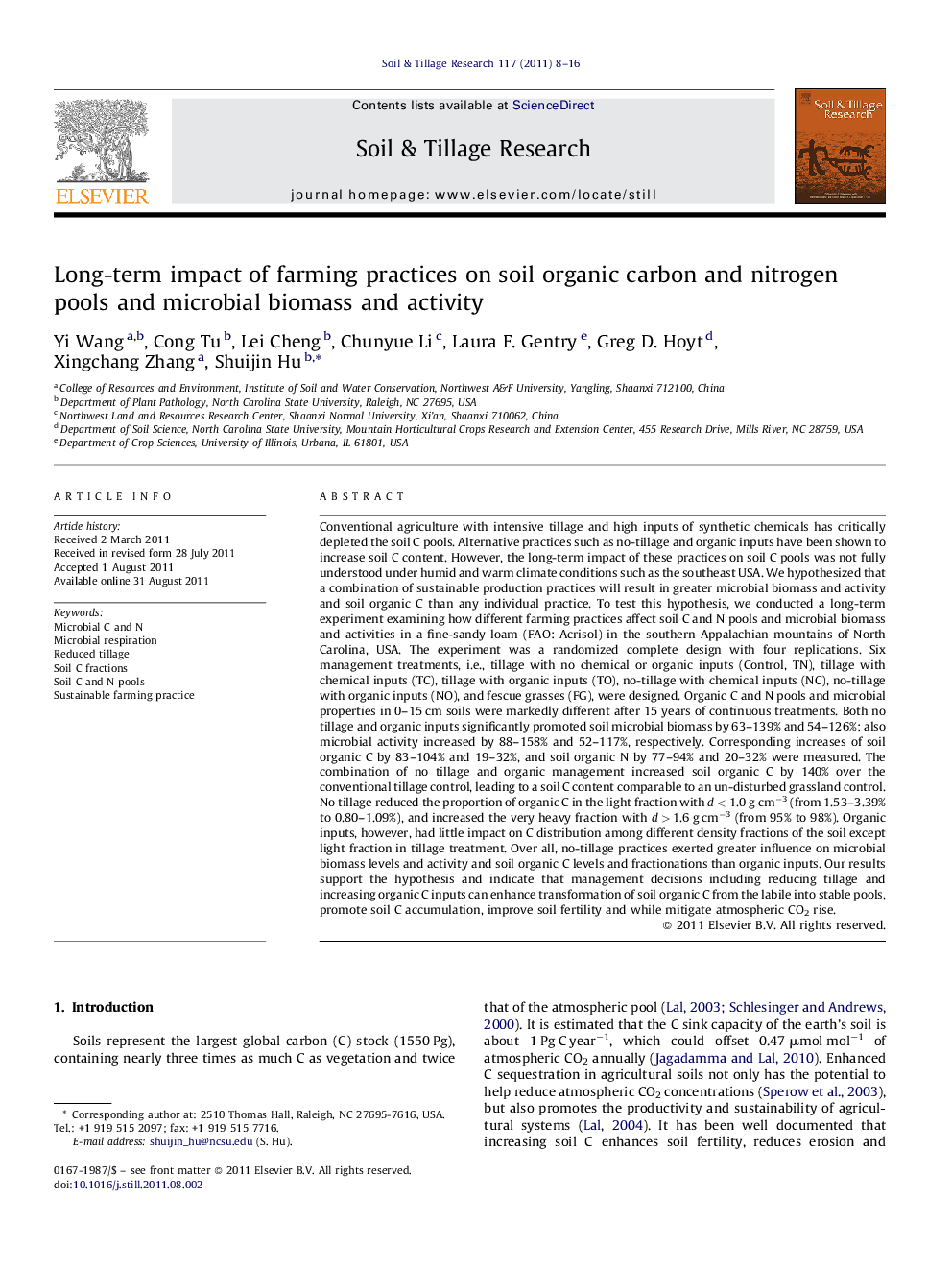| کد مقاله | کد نشریه | سال انتشار | مقاله انگلیسی | نسخه تمام متن |
|---|---|---|---|---|
| 306030 | 513068 | 2011 | 9 صفحه PDF | دانلود رایگان |

Conventional agriculture with intensive tillage and high inputs of synthetic chemicals has critically depleted the soil C pools. Alternative practices such as no-tillage and organic inputs have been shown to increase soil C content. However, the long-term impact of these practices on soil C pools was not fully understood under humid and warm climate conditions such as the southeast USA. We hypothesized that a combination of sustainable production practices will result in greater microbial biomass and activity and soil organic C than any individual practice. To test this hypothesis, we conducted a long-term experiment examining how different farming practices affect soil C and N pools and microbial biomass and activities in a fine-sandy loam (FAO: Acrisol) in the southern Appalachian mountains of North Carolina, USA. The experiment was a randomized complete design with four replications. Six management treatments, i.e., tillage with no chemical or organic inputs (Control, TN), tillage with chemical inputs (TC), tillage with organic inputs (TO), no-tillage with chemical inputs (NC), no-tillage with organic inputs (NO), and fescue grasses (FG), were designed. Organic C and N pools and microbial properties in 0–15 cm soils were markedly different after 15 years of continuous treatments. Both no tillage and organic inputs significantly promoted soil microbial biomass by 63–139% and 54–126%; also microbial activity increased by 88–158% and 52–117%, respectively. Corresponding increases of soil organic C by 83–104% and 19–32%, and soil organic N by 77–94% and 20–32% were measured. The combination of no tillage and organic management increased soil organic C by 140% over the conventional tillage control, leading to a soil C content comparable to an un-disturbed grassland control. No tillage reduced the proportion of organic C in the light fraction with d < 1.0 g cm−3 (from 1.53–3.39% to 0.80–1.09%), and increased the very heavy fraction with d > 1.6 g cm−3 (from 95% to 98%). Organic inputs, however, had little impact on C distribution among different density fractions of the soil except light fraction in tillage treatment. Over all, no-tillage practices exerted greater influence on microbial biomass levels and activity and soil organic C levels and fractionations than organic inputs. Our results support the hypothesis and indicate that management decisions including reducing tillage and increasing organic C inputs can enhance transformation of soil organic C from the labile into stable pools, promote soil C accumulation, improve soil fertility and while mitigate atmospheric CO2 rise.
► Continuous no-tillage and organic C inputs increased soil organic C and N and altered soil C distribution.
► No-tillage plus organic C inputs enhanced soil microbial biomass and activities.
► No-tillage dominantly impacted soil C and N over organic inputs.
► Sustainable farming practices promote soil C accumulation and may alleviate atmospheric CO2 rise.
Journal: Soil and Tillage Research - Volume 117, December 2011, Pages 8–16